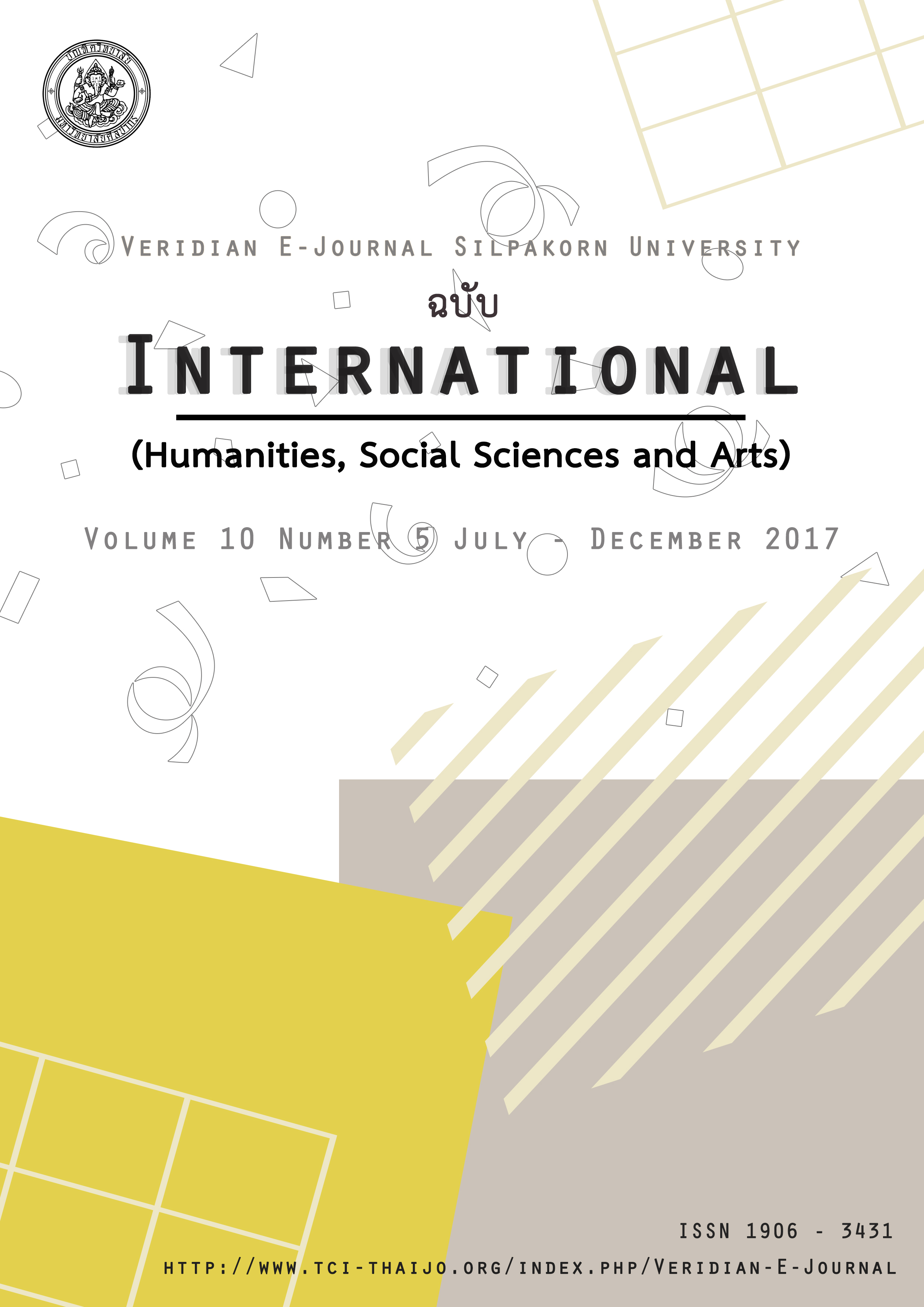A Development of Smart Book to Assist Communication for Hearing Impaired Students
Main Article Content
Abstract
This research aimed to develop smart book to assist communication for hearing impaired students. The objective included: 1) to study basic information on developing smart book by interviewing 10 hearing impaired students in high school from schools under the Ministry of Education, academic year 2016 and 10 experts and develop contents based on the information, and 2) to develop smart book to assist communication for hearing impaired students. Topics include 3 daily life communication situations: using BTS transportation, going to a hospital, and making an identification card. The smart book was developed for a smart phone with Android system and was tested by 10 experts.
Research findings were as follow:
1. Hearing impaired person usually has language problems such as limit in vocabulary and incorrect grammar. Visual perception is very important to do activities in everyday life. Learning language requires visual perception to replace or pair with hearing to convey meaning to other people. This is a basis that leads to further learning which affects intellectual skills by comparison, differentiation, relation, and prediction. These skills can be trained. Media design for hearing impaired people should consider various types of media and multimedia presentation. The use of text helps to understand the content only a little. Multimedia which consists of text, pictures, and sign language will help students to understand the content better than text only or text with sign language. Likely, presentation media with text and pictures will help students to understand the content better than text only or text with sign language. Therefore, it can be concluded that media design to assist communication for hearing impaired should consist of text, pictures, and sign language.
2. Smart book to assist communication for hearing impaired students consists of 6 elements: 1) Information, 2) Multimedia and technique, 3) Interface and navigation, 4) Screen design, 5) Display and access to resources, and 6) Using instruction. Evaluation results of smart book by the expert found that the overall quality assessment of the smart book by 10 experts found that the quality was at highest level (=4.76, S.D. = .44). When considering each item, Application structure was designed to cover the content and Picture had the highest mean (=-5.00, S.D. = 0.00), followed by The accuracy of the content and The format of the application is appropriate for use (= 4.90, S.D. = 0.32).

